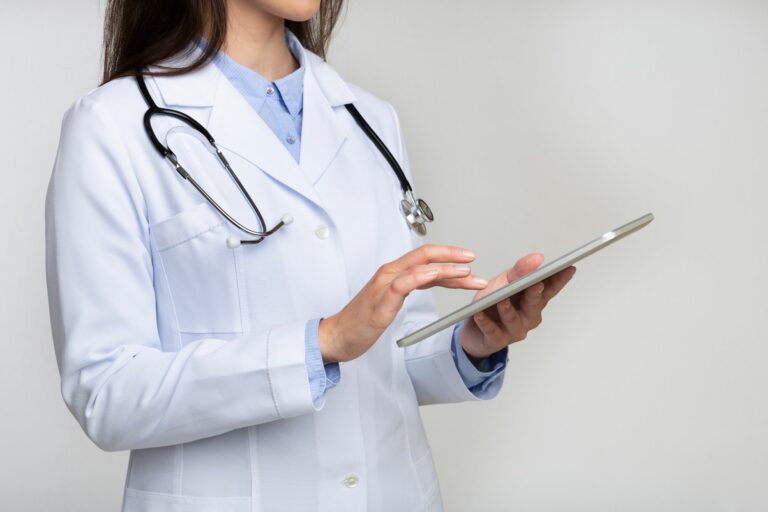Remote Patient Monitoring (RPM) is a useful program that has plenty of advantages for both patients, clinicians and the entire health systems. It is breaking new ground with the emergence of COVID-19 and the support from the government.
Healthcare practitioners have begun to employ RPM not only to help their patients’ health and safety, but also to generate revenue streams during this difficult period. If you’re considering about starting your own remote patient monitoring program for your clinic or patients, here are eight things to think about before investing time, money, and staff in the program.
Provide different methods of onboarding patient
To have the highest rate of success, choose an RPM partner that can help you provide different methods of onboarding patients. Clinicians should thoroughly explain the program’s benefits and address any questions the patient may have throughout their appointments. Then, let them choose the best option to be onboarded; it could be in-person, online or via phone call. This is important especially in the midst of the pandemic. Remember that the purpose of the RPM, including the onboarding process, is to bring convenience to both patients and clinicians.
Furthermore, patients may experience minor onboarding challenges or have queries about how to use the devices and application. With the support of your clinical staff, you may find it advantageous to educate the patient, give training manuals, and continue to assist them as they progress through the procedure.
Clearly define your goals
The most crucial aspect of RPM to understand the goals you are trying to achieve. Both the clinical staff and the patients need to trust the process and be engaged in reaching the goals. Are you trying to improve the patient’s health outcomes of a certain chronic condition? Clinicians using RPM should tailor its communication to the needs of the patient and ensure that the results are measurable. An ideal goal would be “to improve patient glucose readings in patients aged 75 and up by 10% in the first six months.” “Improve patient satisfaction” is an example of a poorly defined goal.
Choose the best health monitoring devices
The quality, including accuracy and the ease of use, of RPM devices you provide to your patients will play a huge role in the success of your program. Common RPM devices includes glucose meter, blood pressure monitor, weight scale, pulse oximeter, and smartwatch. Your RPM program should have seamless integration of these devices and wearables and the mobile application. Make sure you choose a Telehealth company that complies with the quality standards and that provides training and troubleshooting.
Choose continuous real-time data collection
Obtaining health data is crucial in RPM program. Patient-generated health data should be clearly presented in the app and transmitted continuously in real-time going to clinician’s dashboard. Early detection of health anomalies is critical for disease prevention and health promotion. To be successful in RPM program, patient data collection must be timely so that you can recognize health conditions at the earliest possible stage, when treatment is most effective and yields best results.
Make sure the technologies and systems are easy to use
According to the Centers for Disease Control and Prevention (CDC), around 85% of older adults have at least one chronic health condition, and 60% have at least two chronic diseases. RPM program is mostly used for patients with these conditions and age group. You should choose devices and software that are straightforward and easy for your patients to operate, even without too much assistance from their family members or caregivers. DrKumo, a leader in Next-Gen Remote Patient Monitoring Solution, features Autopilot Mode on mobile application. It allows patients to take measurements automatically with just one tap on their phone.
Prioritize patient engagement and education
A 2019 study examined the impact of patient engagement on diabetes patients’ health outcomes. Higher levels of patient activation and engagement with remote patient monitoring technology were associated with better glycemic control outcomes, according to the findings. While this study was limited to diabetes patients, the success stories of various clinics demonstrate the value of patient engagement.
This is related to the previous item: the technologies must be user-friendly for patients. Secondly, those technologies must show results and help the patients improve their overall health outcomes. If patients can see that the RPM works and you actively interact without despite the distance, they will be more willing to play an active role in care management.
Choose secure and HIPAA-compliant RPM solution
One challenge with RPM technologies is the potential for unsolicited patient data. Choose RPM solution that has a HIPAA-compliant technology platform, which meets CMS guidelines, such as encrypting patient information both at rest and in transit. When patient uses the device to take measurements, the data should be uploaded to a secure server. A secure RPM software is designed in a secure environment and contain numerous ways of establishing secure connections between patients and providers. Patients’ trust in RPM program should not be undermined by concerns about the privacy and security of these systems.
Ensure smooth Medicare billing and reimbursement
One of the most significant advantages of RPM program for providers is the financial gain as well as the improved health outcomes of patients. Having seamless workflows in place will keep your practice running smoothly, allowing you to meet your goals. Choose an RPM partner who can provide clear billing and reimbursement assistance.
Contact DrKumo to know more about running a successful Remote Patient Monitoring and to help you start with the program.








